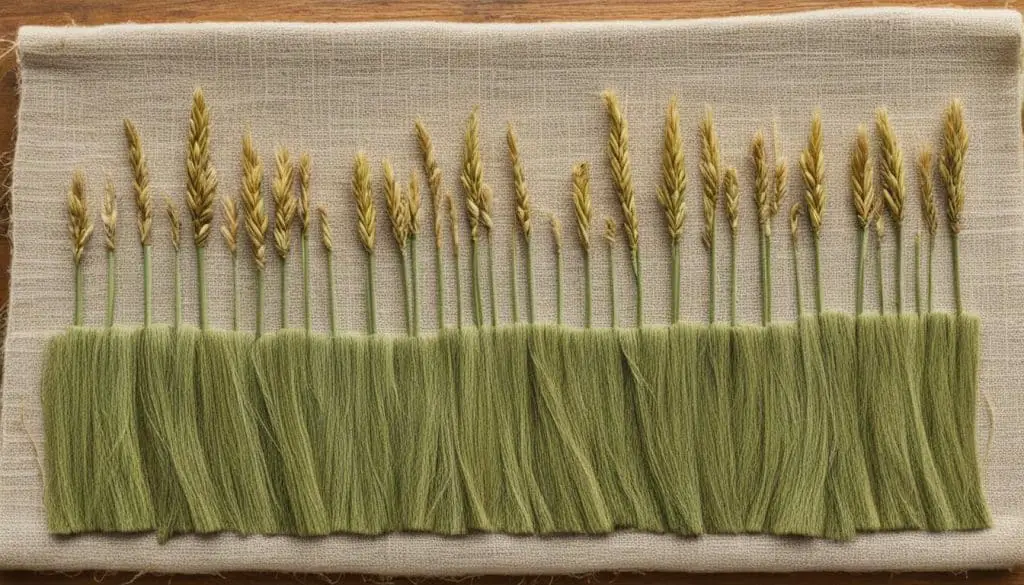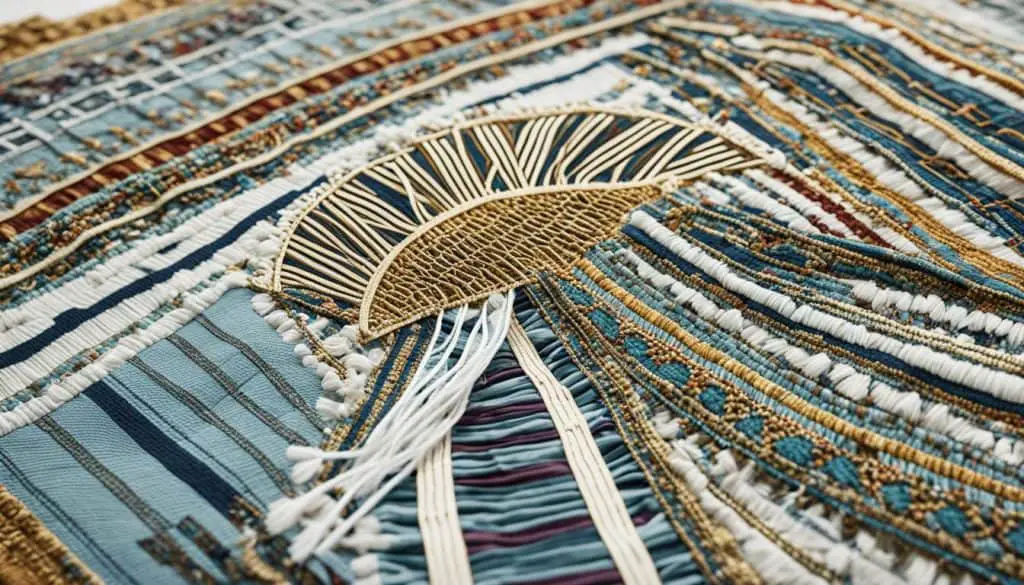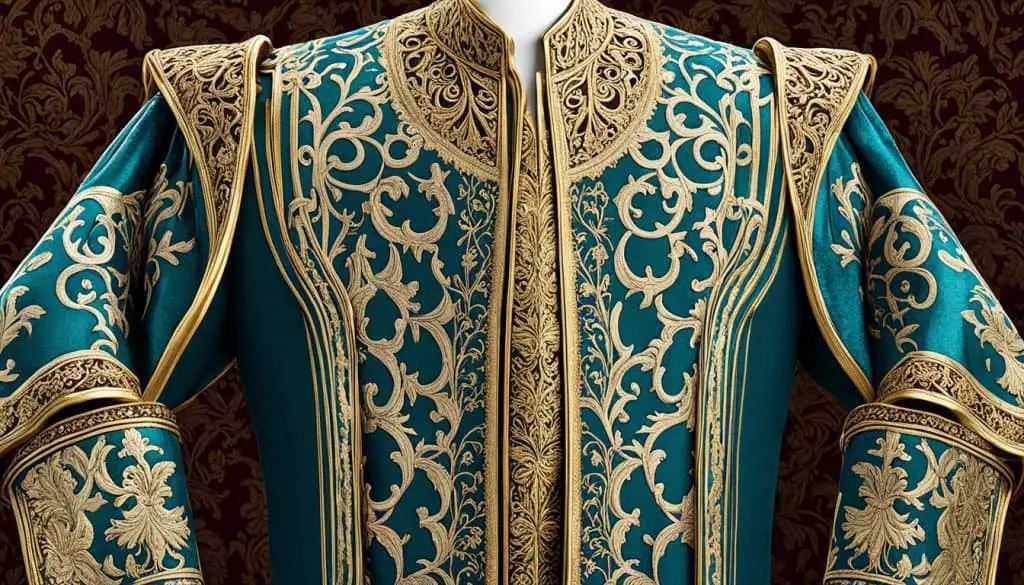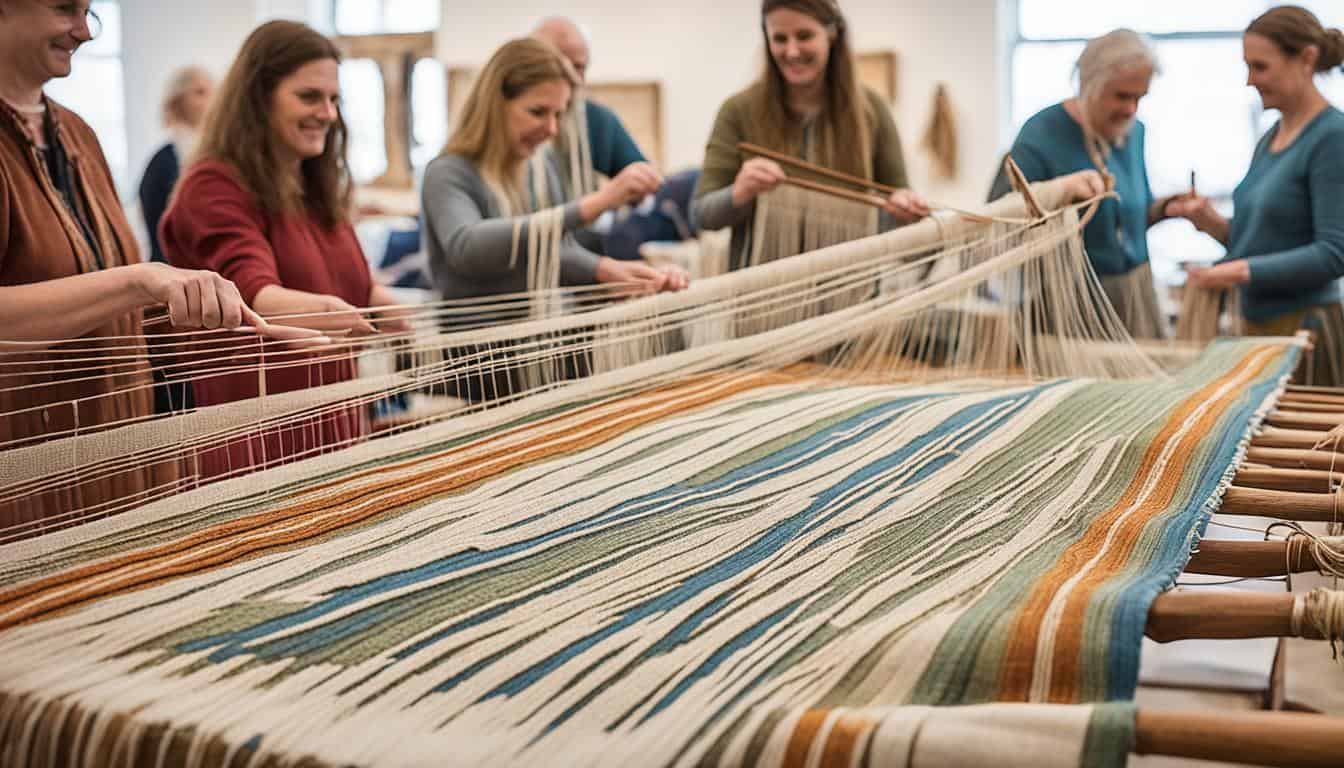Table of Contents
Ever thought about weaving and textiles in the old days of the Bible? The role of these arts in ancient life and faith was significant. Let’s look at six key mentions of weaving and fabrics found in the Bible.
The Israelites led a wandering life, so weaving was crucial. For the priests, special clothes were made, highlighting the craft’s religious role. Aquila and Priscilla were a tentmaking couple who helped Paul preach in Corinth. This shows how weaving affected daily life and faith (Acts 18:2-3).
In the construction of the tabernacle, specific materials were used, such as flax and linen. Women skilled in spinning and weaving offered their help too. This points to a community effort in making the tabernacle’s items (Exodus 35:23-26).
Learn about the detailed tent coverings of the tabernacle, from linen patterns with cherubim to animal skins for protection (Exodus 26).
Priests wore special clothes for their duties, which were quite fancy. They had gold thread and precious stones, showing the importance of these textiles (Exodus 28).
In Esther’s story, special clothes indicate high importance. A royal robe and a purple robe signal leadership, while a fine headdress is about honor (Esther 8:15).
Prophet Isaiah used a metaphor. He compared people’s bad deeds to a spider’s web, pointing out their harm. This shows how textiles were used to explain deeper meanings (Isaiah 59:5).
Ready to explore the Bible’s mentions of weaving and textiles? It’s a fascinating trip into history and faith. Let’s dive into The Tentmakers’ world together.
Tentmakers on the Move (Acts 18:2-3)
In Acts 18:2-3, we meet Aquila and Priscilla. This married couple made tents for a living. They share Paul’s Jewish faith when he meets them in Corinth. They join Paul, working as tentmakers and sharing the gospel.
Corinth was a big deal for trade back then. Aquila and Priscilla used their tentmaking skills to earn a living. Their work involved making and fixing tents and other woven products.
Through their trade, Aquila and Priscilla supported themselves and helped Paul. As both business and faith partners, they traveled with Paul. They helped spread the gospel to new places.
“Aquila and Priscilla showed us something amazing. They used their Jewish faith and tentmaking to spread Jesus’ message. Their skill in tentmaking helped them meet people in the market and share the good news with them.”
Aquila and Priscilla’s tentmaking travels show us how early Christians were smart and flexible. They managed to work and spread the gospel at the same time. Their story is a strong lesson for Christians today.
Acts 18:2-3 underlines not only the practicality of their trade but also its spiritual importance. Aquila and Priscilla truly lived out spreading the love and redemption. They did this by combining their skills with their faith.
Next, let’s look at how weaving and textiles are mentioned in the Bible. We’ll see how skilled women helped build the tabernacle.
From Flax to Fashion (Exodus 35:23-26)
In Exodus 35:23-26, we learn about how the Israelites made the tabernacle. This was a portable holy place they carried in the desert. The passage shows us that women played a big part by making materials like purple and scarlet thread from flax and goat hair. They spun and wove these materials with great skill.
To create fabrics, first, the women grew and picked flax. Then, they processed this flax to get its fibers. These fibers were spun into strong threads. Women used these threads to weave on looms, creating beautiful patterns.
Linen and goat hair were used inside the tabernacle, showing careful work and respect for the space. The women’s work made the tabernacle not just pretty but also strong and useful.
Women as Masters of the Loom
Exodus 35:23-26 highlights how women were key in making the tabernacle. They volunteered to use their talents. Their work united their community and showed their deep commitment.
Just as these women used their talents and resources for the tabernacle, we too can draw inspiration from their selflessness and apply it to our own lives. Every skill we possess, every talent we cultivate, can be transformed into something meaningful and impactful.
The work with flax in making the tabernacle was vital. It not only built the holy space but also united the Israelites. The women’s dedication and skill created a foundation for fabric-making that we still admire today.

A Covering for the Dwelling (Exodus 26)
Exodus 26 goes into detail about making the tabernacle’s tent covers. It highlights protection and the use of symbolism. The inner covers are made of linen and show cherubim figures. The outer covers are of animal skins. They protect the sacred place from the weather and the wild.
The linen for the inner covers shows how skilled the makers were. They made patterns with cherubim. These figures mean the heavenly beings protect the tabernacle. The cherubim on the fabric not only look good. They remind people of God’s care while they are in the worship space.
“The intricate weaving of linen with cherubim figures intertwines harmony and heavenly protection.”
The animal skin outer covers are about practical use. They keep the elements out. This keeps the holy place safe from wind, sand, and extreme heat. A mix of soft, symbolic fabric inside and strong animal skin outside shows the balance. It balances sacredness with real-world protection in the tabernacle’s design.
The choice of materials for the tabernacle’s covers shows the Israelites’ effort to honor God. Their attention to details reinforces the idea of protecting the holy place. This makes the tabernacle a key place for worship and meeting with God.
https://www.youtube.com/watch?v=6ubOuUq-rHY
| Coverings | Materials |
|---|---|
| Inner Coverings | Linen fabric featuring woven cherubim figures |
| Outer Coverings | Animal skins |
Priestly Garments (Exodus 28)
In Exodus 28, it talks about the special clothes priests wore. These clothes showed the priests’ importance and duty. They were made with great care to show how holy their work was.
The priestly clothes were beautiful and made of special materials. They had gold, colored linen, and gemstones. The gold added shine and showed the priests were chosen by God. The colored linen made the clothes look joyful and full of life.
Every part of the priests’ clothing had a job to do. Sashes kept everything in place, making the priests look neat. Their hats, like the turban, were signs of their leadership and holiness.
The clothes’ materials were chosen for more than looks. They had deep meaning. The colors and gems showed God’s glory. The detailed designs aimed to make people feel respect and wonder.

“And you shall make holy garments for Aaron your brother, for glory and for beauty. You shall speak to all the skillful, whom I have filled with the spirit of skill, that they make Aaron’s garments to consecrate him for my priesthood. These are the garments that they shall make: a breastpiece, an ephod, a robe, a coat of checker work, a turban, and a sash.”
In the end, the priestly clothes from Exodus 28 were more than just clothing. They pointed to something higher. They were a way to see God’s presence with his people.
| Garment | Description |
|---|---|
| Breastpiece | A decorative piece worn over the chest, adorned with precious stones representing the twelve tribes of Israel. |
| Ephod | A sleeveless garment worn over the robe, consisting of gold, blue, purple, and scarlet threads woven intricately together. |
| Robe | A long, seamless garment made of blue fabric, adorned with golden bells and pomegranates at the hem. |
| Coat of Checker Work | A garment made of finely woven linen, featuring a checkered pattern. It was worn under the ephod. |
| Turban | A head covering made of fine linen, symbolizing the priest’s separation and consecration to God. |
| Sash | A belt-like accessory used to secure the garments and further distinguish the priests. |
A Royal Robe (Esther 8:15)
In the book of Esther, Jews were in danger, but King Ahasuerus let them fight back. This decision was a turning point, giving hope and power to the Jews. Mordecai, Esther’s cousin, was key in this victory because of his role.
King Ahasuerus rewarded Mordecai with a special clothing item called a royal robe. It was beautiful, mainly made of blue and white linen. The fine design and fancy material of the robe were a sign of honor and Mordecai’s important status in the kingdom.

Mordecai also got a headdress with his robe. This showed his high position and authority. Everyone could see he was now a guardian of his people.
He even got a purple woolen robe, which was for kings only. This made him look more regal. It highlighted his key part in the kingdom and his dedication to his people’s safety.
“The royal robe in Esther 8:15 shows the respect and honor from King Ahasuerus to Mordecai. It’s a symbol not just of Mordecai’s bravery but also of how important it is to protect one’s people.”
Esther 8:15 is a big moment where the Jews got the chance to fight back. Mordecai’s robe tells a story of the strength and hope of the Jewish people. It shows the value of standing strong against challenges.
Figurative Fabric (Isaiah 59:5)
In Isaiah 59:5, the prophet Isaiah uses a powerful weaving metaphor. He compares the corrupt actions of the people to a spider’s web. This shows how their deceptive deeds are like a web: delicate, fragile, not lasting, and with no real value.
Isaiah points out that just as a weaver carefully plans their pattern, so do the people with their wicked schemes. But, he also says their efforts are like a spider’s web. This means their plans are temporary and will not succeed in the end.
Isaiah also talks about viper’s eggs, which are dangerous and lead to bad things. He adds this to show the harmful outcomes of their evil actions. The weaving metaphor helps us see the evil deeds both lack value and bring harm.
By using the weaving metaphor, Isaiah teaches us a deep lesson. He warns about the dangers of living a deceitful and wicked life. Isaiah encourages people to choose righteousness. He wants us to avoid getting caught up in doing wrong and facing its bad results.




